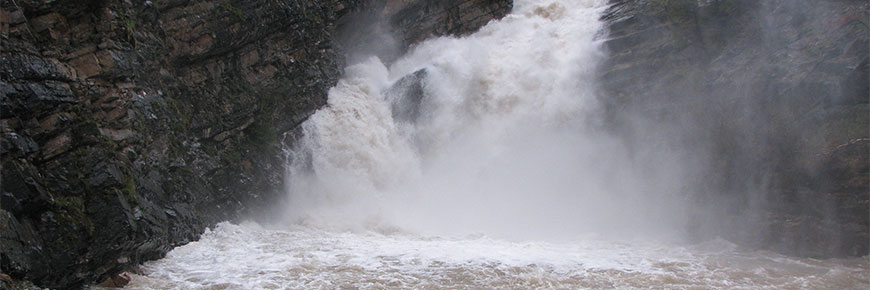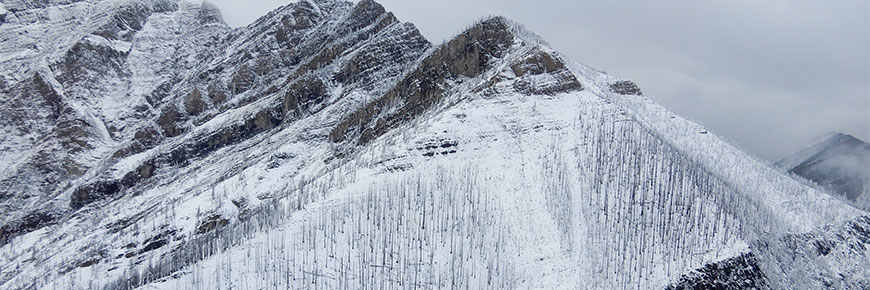Flood and avalanche
Waterton Lakes National Park
Natural processes greatly influence Waterton Lakes National Park and the greater Crown of the Continent ecosystem.
They shape the land and, although they appear destructive, they are important for renewing and producing variety in the park's living landscapes.
In Waterton Lakes National Park, the three most critical natural processes are fire, flood and avalanches.
Flood

Floods are important natural processes that contribute to building and shaping the landscape.
For example, the alluvial fans created by Blakiston and Cameron creeks grow and are replenished with nutrients following both small and large floods. Over the last century, large floods have occurred in 1908, 1923, 1937, 1953, 1964, 1975, 1995 and 2013.
The Cameron fan has provided a prime lakeside location for the townsite. Although floods benefit natural habitats, they can be destructive to human habitats.
Parks Canada has tried to reduce the threat of floods to the townsite by straightening and reinforcing the banks of Cameron Creek where it flows through town. In contrast, floods are not inhibited from doing their natural ecosystem renovations on the Blakistan fan, which provides important habitat for ungulates.
Avalanche

Avalanches too are mainly considered destructive.
While avalanches can, in a matter of seconds, hurtle down a mountainside, breaking large trees, releasing massive rocks and damming streams, they also clear the way for new vegetative growth and create prime habitat for grizzlies and other wildlife.
Related links
- Date modified :